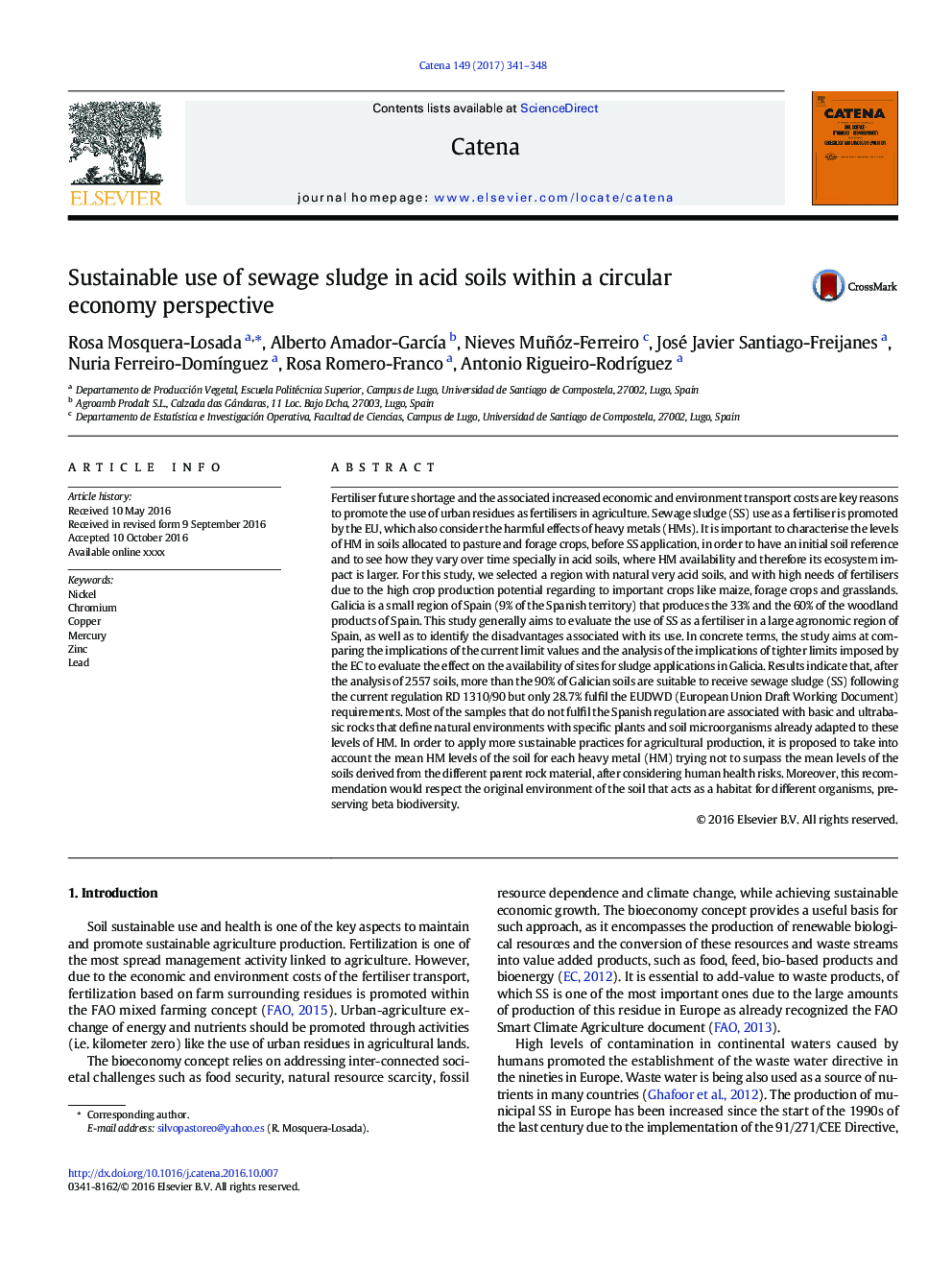| کد مقاله | کد نشریه | سال انتشار | مقاله انگلیسی | نسخه تمام متن |
|---|---|---|---|---|
| 10997841 | 1332079 | 2017 | 8 صفحه PDF | دانلود رایگان |
عنوان انگلیسی مقاله ISI
Sustainable use of sewage sludge in acid soils within a circular economy perspective
ترجمه فارسی عنوان
استفاده پایدار از لجن فاضلاب در خاک اسید در یک چشم انداز دایره ای
دانلود مقاله + سفارش ترجمه
دانلود مقاله ISI انگلیسی
رایگان برای ایرانیان
کلمات کلیدی
نیکل، کروم، فلز مس، جیوه، فلز روی، رهبری،
موضوعات مرتبط
مهندسی و علوم پایه
علوم زمین و سیارات
فرآیندهای سطح زمین
چکیده انگلیسی
Fertiliser future shortage and the associated increased economic and environment transport costs are key reasons to promote the use of urban residues as fertilisers in agriculture. Sewage sludge (SS) use as a fertiliser is promoted by the EU, which also consider the harmful effects of heavy metals (HMs). It is important to characterise the levels of HM in soils allocated to pasture and forage crops, before SS application, in order to have an initial soil reference and to see how they vary over time specially in acid soils, where HM availability and therefore its ecosystem impact is larger. For this study, we selected a region with natural very acid soils, and with high needs of fertilisers due to the high crop production potential regarding to important crops like maize, forage crops and grasslands. Galicia is a small region of Spain (9% of the Spanish territory) that produces the 33% and the 60% of the woodland products of Spain. This study generally aims to evaluate the use of SS as a fertiliser in a large agronomic region of Spain, as well as to identify the disadvantages associated with its use. In concrete terms, the study aims at comparing the implications of the current limit values and the analysis of the implications of tighter limits imposed by the EC to evaluate the effect on the availability of sites for sludge applications in Galicia. Results indicate that, after the analysis of 2557 soils, more than the 90% of Galician soils are suitable to receive sewage sludge (SS) following the current regulation RD 1310/90 but only 28.7% fulfil the EUDWD (European Union Draft Working Document) requirements. Most of the samples that do not fulfil the Spanish regulation are associated with basic and ultrabasic rocks that define natural environments with specific plants and soil microorganisms already adapted to these levels of HM. In order to apply more sustainable practices for agricultural production, it is proposed to take into account the mean HM levels of the soil for each heavy metal (HM) trying not to surpass the mean levels of the soils derived from the different parent rock material, after considering human health risks. Moreover, this recommendation would respect the original environment of the soil that acts as a habitat for different organisms, preserving beta biodiversity.
ناشر
Database: Elsevier - ScienceDirect (ساینس دایرکت)
Journal: CATENA - Volume 149, Part 1, February 2017, Pages 341-348
Journal: CATENA - Volume 149, Part 1, February 2017, Pages 341-348
نویسندگان
Rosa Mosquera-Losada, Alberto Amador-GarcÃa, Nieves Muñóz-Ferreiro, José Javier Santiago-Freijanes, Nuria Ferreiro-DomÃnguez, Rosa Romero-Franco, Antonio Rigueiro-RodrÃguez,
